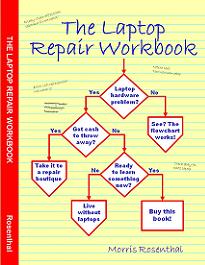Google “Farmer” Update: Big Panda Makes Mountains and Molehills
March 15th, 2011 by
Pandas munch only on bamboo…
…Authoritative, Quality Bamboo.
Demand vs. “Thanks”
Big Panda vs. Old Dinosaur
Playing numbers games with Big Panda
So what does it all mean?
Over two weeks ago, Google scared the SEO community by publicly releasing what even they called a “pretty big” change in their algorithm, “noticeably” affecting 11.8% of queries. This change, coming on the heels of competitor Blekko.com blacklisting certain content farms and the announcement of a Chrome plugin to block websites from search, is part of what analysts at Sistrix call a “quest for quality.” This is old news to anyone paying attention, but a wide variety of opinions are still circling about what this update really meant. Most people pointed at “content farms” as the target of the update; yet it becomes clear that these sites were not the primary target nor were they targeted intentionally as “low quality.”
Pandas munch only on bamboo…
The Big Panda update is the culmination of a long line of work; Matt Cutts, Google’s spam god himself, points to the Caffeine update from way back in 2009 as the beginning of his team really looking at low-quality results. The spiders were finding so many new pages that they had to do something about plagiarists, scrapers, aggregators, and meaningless fluff content. While Cutts was happy with the low amounts of straight V14gR4-style spam, he was worried about that fluff — what he called “shallow content.”
Moving forward two years to the end of this January, Cutts announced a small change which attempted to make some programmer-centric search terms rank Stack Overflow and other providers of original user-created content over sites scraping that content. This affected a whopping .5% of queries, including such high-converting gems as “pass json body to spring mvc” and “aws s3 emr pig.” Obviously, ma and pa aren’t going to see these changes.
But the ones made a month later, seen first on February 24th, are the kinds of searches the average user would be making. Demand Media, owner of eHow and other alleged content farms made an almost-snarky blog post that either thumbed its nose at Google’s change or reaffirmed the company’s legitimacy, depending on how much bile you smelled on the words.
By the time Google officially announced the change on its blog on the 28th, webmasters, SEO experts, and even CNN had weighed in on the change. Website owners noted major changes in their rankings and traffic, and they were rarely happy with the results. Finally, on March 1st, a heart-to-heart with Cutts and algorithm genius Amit Singhai at TED 2011 explained the change in depth.
…Authoritative, quality bamboo.
This talk laid out how Google designed its algorithm. Instead of trying to find factors and hope that said factors are in line with users’ expectations, they asked questions of real people about a variety of websites, then built the algorithm to match the answers to those questions. These questions cut to the core of what’s important on web sites: Would I give this site my credit card information? Would I use this information for my sick child? These questions should be at the core of website development and content creation — unfortunately, Google has to step in and play Gatekeeper and Keymaster.
The next day, Jason Calcanis, CEO of “education site” Mahalo.com known for quipping “SEO is Bullshit,” laid off 10% of his workforce and halted all written content production in response to the site’s losses in search engine ranking, when a month earlier he boasted of doubling the size of the company this year. While not talking to the press, he tweeted: “We were the right size for a certain market opportunity, and overnight that changed.” Somehow that sounds like AOL and Netscape, too…
Later that day, Google set up a thread in their forum to try to assuage the growing litany of discontented site owners. Google knew people were watching, and they were quickly responding. Most posts complained of losing a majority of income from the algorithm switch, and pridefully stated nothing could have been wrong with their websites. SEO gearheads wagged their heads in frustration and more or less told everyone to chill out. Without copying what Ms. Fox said, not much has changed in SEO — don’t try to “win” at it by doing the bare minimum and don’t base your entire livelihood on search engine ranking. That’s not comforting to someone like the owner of Fonerbooks, who claimed to see everything but his original work in the rankings, or HealthCastle, who saw a 40% drop in traffic and wanted to know “why Google named us low quality.”
Demand vs. “Thanks”
Two companies represent diametrically opposed business plans and responses to the Algorithm change: Demand Media and Mahalo, the well-rounded shrug and the panicked crisis. I think that the differences in approach to content farming truly showed the reason why the sites were affected differently by the Big Panda algorithm change.
Demand Media owns eHow, one of the most egregious of content farms. Yet, according to most data, it rose in the rankings. While this is enough to aggravate “legitimate” content creators, how eHow is supposed to be used sets it apart and mitigates much of the spamminess it’s known for. Adweek explains the concept well:
The company’s evolving media strategy, according to Rosenblatt, is to attract users to eHow and other properties by answering highly specific search queries, and then drive them to other branded channels, hoping they become loyalists. “We are constantly trying to figure out ways of bringing people in [and] give them a much broader experience on our network,” he said.
They use long-tail and specific search phrases to drive traffic to niche branded sites. These sites have meaningful authors and sponsors: Lance Armstrong, Tyra Banks, and Rachael Ray among them. I’ll even admit two Demand Media-owned sites are too often in my history: David Wong’s Cracked.com and Fancylad’s i-am-bored.com. What sets Demand Media apart from some of the other content farms is the high level of community loyalty and interaction these sites enjoy. Most stories and links on these sites have plenty of user comments, and their Facebook pages enjoy a level of curation and personality that rival traditional content providers like bloggers. The links are strongly shared and enjoys some market saturation — an “article” on the flaws in alien takeover strategies has 1.3 million views, 10,000 likes, and 1600 comments over the course of 32 days. That’s better than most SEO companies’ biggest clients.
Compare this to Mahalo, which hardly enjoys the same kind of saturation. A much more broadly marketable subject, “Super Bowl Commercials 2011,” garnered only 37 tweets and no comments over the same number of days. Mahalo, though designed cleanly and conspicuously missing any ads, refuses to market themselves to an audience, happy to provide something that doesn’t work over and over. This piece of poetic gold shows the difference in style of laziness:
DreamWorks forthcoming animated comedy “Kung Fu Panda 2,” featuring the voice talent of Jack Black, had a trailer debut during Super Bowl XLV. The ad features the film’s tag line: “We Will Wok You,” along with the lead character attacking enemies with a wok…
While Demand might pump out three articles on the same fluff topic, there isn’t the lack of attention to meaningfulness seen on other farms. Don’t forget that Mahalo is trying to brand itself as a one-stop-shop for learning, while Demand revels in its content for content’s sake mission.
Big Panda vs. Old Dinosaur
But all this talk about content farms is a red herring. This was not Blekko; this was not a targeted swipe at a business plan. If that were the case, Fonerbooks, who had allegedly well-respected web sites with large amounts of original and informative content, would have no problems with the “Farmer” update. The Wall Street Journal took up his case, citing his innovative computer troubleshooting techniques, and using it as a screed against the latest update’s failure to address the “real problem.” The article compares Demand Media’s eHow 200-word summarization to the detailed article 10 times the length that eHow supposedly “stole.”
Here are the two pages in question: the first link on Google for “toshiba troubleshooting” and the first result for “toshiba troubleshooting fonerbooks.” The difference is striking.
Sure, eHow has two other articles linked that have nearly the same title, though thankfully with different content. Sure, eHow has 7 ads in the first 900 or so pixels of the screen, and even more below the fold. Sure, eHow’s writer has written such crucial treatises on computer repair as “How to Take Crease Marks Out of Posters” and “Fitness Requirements for the Army Reserves.” But what page is more useful to the reader?
Is it the one with poorly laid out tables, walls of text, veiled insults to the reader, and links to static gif flowcharts, culminating with an ever-present plug to buy a $25 self-published book? Or is it the one that someone can look at immediately and see if the information is useful? Comparing site statistics shows that users spend the same amount of time on both sites — can you read 2000 words in under 3 minutes?
This isn’t to indemnify the owner of Fonerbooks; rather to show that this update was really about user experience, rather than a content-based punishment. Are you providing a brand to your readers? Will they come back, recommend your site, and consider you a valuable source of information? 4 people “Liked” the eHow link on Facebook — that kind of user interaction is absent on Fonerbooks, excluding buying his prose.
Playing numbers games with Big Panda
At the heart of all SEO is trying to figure out what Google wants. How do we deliver what the algorithm deigns important, while still remaining relevant to the clients of our clients? Eight factors seemed relevant across the posts and stories about the “Farmer” update. Big Panda doesn’t want to play games; the factors suggested are a product, not a cause of good marketing and website design. These factors were culled from a variety of sources, though Searchmetrics’s confidence in visitor statistics like bounce rates, saying they “have obviously been part of the quality guidelines of the update” provided an excellent starting point to develop a way to examine. Search Engine Land’s “Why Me?” post also provided important metrics to test, such as website authority and ad density.
- Duplication of Content
- Author Authority
- Ad Density
- Overzealously Using NoFollow Links
- On-site User Engagement
- Off-site User Engagement, i. e. Social Media
- Link Profile
- Visitor Statistics
Using these eight metrics, I tested the top winners and losers from reports by searchmetrics.com, seoclarity.net, sistrix.com, the Google support thread, and other news stories. My method tried to discern if any of these suggested metrics truly held weight.
Using a random article, page, or product linked from the home page of the site, I checked each metric. My method was hardly scientific, and limited by the process of doing it by hand and the subjective nature of some of the variables.
Duplication of content was checked using articlechecker.com or Googling random paragraphs, depending on what gave any results. No duplication was 0; otherwise it was a count up to 20 duplicates on the web. The goal is always 0 duplication, though this method ignored any canonicalization.
Author Authority was a subjective 0, .5, or 1 denoting the author’s specialization of his writing. A writer in a wide variety of fields or with no name received a 0; one who wrote in one general field, such as electronics, received a 1. Those that I felt could have gone either way got a .5. Clearly, more authority should be better.
Ad density was a simple count “above the fold.” My screen is set to 1440×900, falling into the majority of web users according to W3Schools. This helps determine purpose of the page — too many advertisements could mean a low-quality site.
Nofollow links were the percentage of outbound links with a nofollow tag. If a site doesn’t want to pass its link juice, how can we trust those links are helpful to the reader?
On-site User Engagement was a simple count of comments on the page. This usually means a site has repeat visitors and is building a brand.
Off-site User Engagement was split into tweets and Facebook posts. I searched the titles of the pages, long and shortened URLs, and keywords in Tweetscan.com and youropenbook.org. Rarely did these numbers match what was on the site; I’m not sure if this is a weakness or not as Google might not index old tweets or private Facebook pages. Either way, more social involvement means people find your site useful, and should bring your rank up.
The page’s Link Profile was checked via a random smattering of off-site backlinks from the Yahoo Site Explorer. I rated the links on a 5 scale, where 1 is least spammy (AOK) and 5 is most spammy. A spammier link profile should mean a lower ranking, if backlink quality were taken into account.
Finally, visitor statistics of the domain were checked for the most recent time period on Alexa. I checked the bounce rate and time-on-site. Ideally longer is better, though you can’t beat a timewaster like Facebook, who reigns supreme at 32.7 minutes per visit.
The data is embedded and linked at the bottom of the post; I invite anyone to seriously crunch the numbers, but a quick analysis can show “direction,” that is, whether a given factor positively or negatively affects ranking. For a 90% confidence interval, we can see that 4 metrics definitely matter: ad density, social networking, link profile, and visitor statistics. All of these metrics fall in line with the expected effect on ranking described above. In short, Big Panda works.
So what does it all mean?
Deeper study is always needed, but for a designer or marketer, Big Panda brought the web back to the user. The goal, more now than ever, is to create a site that people will want to interact with. Compelling visual designs, interesting and relatable content, and user loyalty both on and off the site will reign supreme.
But that’s been the standard operating procedure of advertising and content production the whole time. In many ways, the more things change, the more they stay the same. Now, Google is whole-heartedly supporting your efforts and rewarding you.
If you’re having trouble surviving with a Big Panda in the room, it’s time to change how you do business on the internet.










Doug,
Is this really journalism?
When the WSJ and CNN wrote about my Foner Books website they did something you negelected to do. They talked to me. Actually contacting the people you are writing about is pretty much Journalism 101. When the New York Times featured my laptop repair website in a story a couple years ago, they talked to me as well.
When the Peace Corp and 4H wanted to use flowcharts from my websites, they asked, rather than stealing or abstracting like content farms. The pages you find of dubious quality have been copied by article farms, scapers and lazy forum posters hundreds and thousands of times. But I guess you chose to look at the order page, and were shocked to find that it included order links.
The saddest thing about the Panda update for me is that Google now promotes piracy sites pushing copyright infringements of my work over my own site, where most visitors would find what they are looking for free. But those piracy sites are feature lots of the “like” buttons that you like so much. They also feature lots of community action, where kids post “Thanks for the book, dude, I was looking for this.”
All that might be your idea of quality. It apparently is Google’s idea of quality. But good luck finding answers when you have a real question, as opposed to participating in Internet tourism, like Google’s test group.
And next time you write a story, consider acting like a real journalist and getting the other side.
Morris Rosenthal
Foner Books
Great blog Doug. Looks like you really did you’re homework for this piece.
I wonder how big the bounce rate signal is, if it’s really there. That’s great for quality sites with a lot of loyalists, but it seems like it would make being a newcomer (even with great content) a lot more challenging. When we search, many of us are looking for exactly what we want, in such a quick and dirty fashion, that even appealing sites that we’ve never seen before get bounced because we say “I’ll check that out later.”
[…] bar, even if I typed in the url; how Google’s ads knew exactly what I typed; that Google’s rankings are always in a state of flux; and even how I like to see the pages I visit. In short, entering this job totally changed how I […]
[…] be fair, I can’t see this complaint, especially in the Panda algorithm change posts. Through sticking to their guns about not releasing too much algorithm data, Google has […]